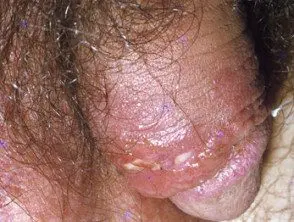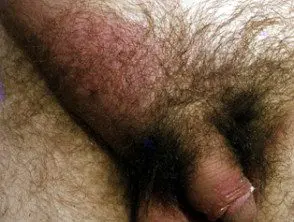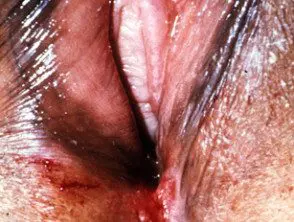What is chancroid?
Chancroid is a sexually transmitted disease. infection (STI) caused by the pesky little gram negative bacterium Haemophilus ducreyi (H. ducreyi) It is characterized by genital pain. ulcers and painful swollen lymph nodes in the inguinal zone. Chancroid is different from non-sexually transmitted skin ulcer disease also caused by H. ducreyi reported in children and young adults in the South Pacific islands.
How common is chancroid?
the incidence Chancroid is unknown due to limitations in the availability of confirmatory diagnostic tests. It is rarely found in New Zealand and in most other developed countries where cases are most often related to travel abroad. There have been small outbreaks in the United States and in France. Chancroid is generally becoming less common, even in endemic areas (Africa, South Asia, Latin America, the Caribbean).
Who is at risk for chancroid?
Anyone who has sexual contact with an individual infected with H.ducreyi you are at risk of developing chancroid. the organism It is highly infectious but does not usually infect intact skin. It is believed to enter the host through microscopic breaks down on the skin during sex. It is diagnosed more frequently in heterosexual men than in women, particularly uncircumcised men.
What are the clinical characteristics of chancroid?
The time from infection during sexual contact to the onset of signs and symptoms is usually 4 to 10 days (range 1 to 35 days). An infected person initially develops one or more reds erythematous papules, which rapidly evolve to pustules and they get bigger until they break down into an ulcer. A typical ulcer is deep, has undercut hairy edges, and is very painful. The base of the ulcer has a purulent exudate and bleeds easily
Chancroid affects the sites most prone to friction during sex. In men, these include the foreskin, the glans, and the crown. If left untreated, 50% cases develop infected lymph glands, which become large, hard, painful lumps called buboes on one or both sides of the groin. The bubbles appear about 1 to 2 weeks after the initial ulcers. Men generally seek medical attention for these painful genital injuries. Buboes can explode and download pus.
In women, ulcers can be located on the lips, vaginal entrance, cervix, perineum and perianal zone. Women generally have nonspecific symptoms, such as pain when urinating or pain when defecating, vaginal discharge, dyspareuniaand rectal bleeding. Some women are asymptomatic carriers and they are not aware of the infection.
Untreated chancroid ulcers can persist for 1-3 months and can cause scarring. They can increase the risk of human immunodeficiency virus (HIV) infection by providing a CD4 rich environment at the entry point. A atypical Presentation can occur in HIV positive people.
Chancroid

Chancroid

Chancroid

Chancroid
How is chancroid diagnosed?
The diagnosis of chancroid is based on CDC's 'probable diagnosis' criteria. The following four criteria are necessary:
- The presence of one or more painful genital ulcers.
- Dark field syphilis exclusion microscopy, a Polymerase chain reaction (PCR) proof of exudate, or serology at least 7 days after the ulcer appears
- Exclusion of herpes simplex infection
- A clinical presentation that is typical of chancroid (ulcer (s) and lymphadenopathy)
Nucleic acid Amplification tests (NAAT) are not commercially available even in developed countries. In a research setting, combined NAATs for syphilis (Treponema pallidum) chancroid (H. ducreyi) and herpes simplex virus have been evaluated with high sensitivity (> 95%) and specificity (99%).
A definitive diagnosis of chancroid traditionally requires the culture of H. ducreyi since ulcer base material in special culture media and under very specific laboratory conditions. The reported sensitivity of the culture is 60–80%.
A Gram stain of ulcer base material or buboes can show typical clumping of the causative organism (described as a 'school of fish') but the sensitivity of the test is poor.
Not antigen or antibody The screening test is in routine clinical use.
What is the treatment for chancroid?
Chancroid is treated with antibiotics. The antibiotics of choice are azithromycin, ciprofloxacin, ceftriaxone, or erythromycin.
Resistance to trimethoprim-sulfamethoxazole and tetracycline has been reported. Ciprofloxacin is not recommended in pregnancy and lactation. A single-dose regimen is preferred to increase adherence to treatment (except in immunocompromised individuals). An assessment of the risk of QT prolongation is required if erythromycin is prescribed.
Since most chancroid diagnoses are based on clinical criteria and patients may have dual infections, empirical therapy also includes treating herpes simplex and syphilis.
Follow-up should continue until the signs and symptoms are completely resolved. Antibiotics improve in 3 to 4 days and re-epithelialization should be evident by day 7. The time to complete healing depends on the affected skin area, the presence of buboes, and the immune status of the infected individual. If healing is delayed more than 7 days:
- Drain fluctuating needle buboes aspiration; this may need to be repeated
- Consider the possibility of treatment failure, poor adherence to treatment, antimicrobial resistance, underlying HIV infection or other diagnosis
An individual with chancroid should not resume sexual activity until all injuries are completely healed. Sexual contacts should be reported immediately and treated, even if they have no signs or symptoms, especially if the contact occurred within 10 days prior to the onset of chancroid ulceration.
It is important that chancroid patients undergo a comprehensive sexual health exam to detect other sexually transmitted infections; the sexual health screen should be repeated a few weeks later.
Can chancroid be prevented?
The risk of acquiring chancroid is reduced through safe sexual practices that include limiting the number of sexual partners, avoiding sexual contact with a high-risk person, and using condoms.
If you think you are infected, stop all sexual contacts and consult your regular doctor or a specialist doctor in a sexual health clinic.

